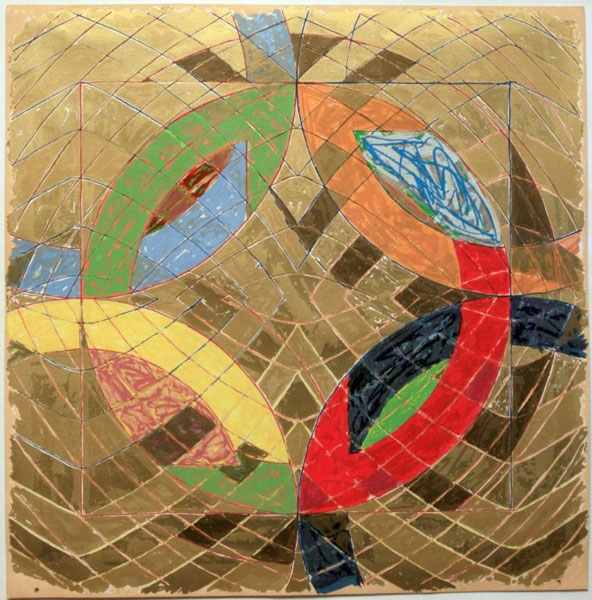ABSTRACTION: 1911 - 2014
Arp Braque Fontana Francis Frankenthaler Graves Guffogg Hirst Hodgkin Johns Kim Miró Moore Motherwell Pepper Scully Segal Stella
October 11 - November 15, 2014
LESLIE SACKS FINE ART
11640 San Vicente Boulevard, Los Angeles, CA 90049
(310) 820-9448
www.lesliesacks.com
info[at]lesliesacks.comFrank Stella, Polar Co-Ordinates VI,
1980 Courtesy Leslie Sacks Fine ArtLeslie Sacks Fine Art is pleased to present Abstraction: 1911 - 2014, an exhibition of modern and contemporary prints, works on paper and sculpture.
Abstraction is a characteristic that's run through the whole of art history to varying degrees, but if one had to select a single tendency that's most dramatically, consistently and universally shaped art since the early 20th century, the most prevalent theme has been abstraction.
The emergence of abstraction as the dominant aesthetic in painting and sculpture took place in concert with the development and publication of Einstein's first theories, ca. 1905. Within two years thereafter, Picasso completed Les Demoiselles d'Avignon, widely considered to be the first modern painting, and by 1910 Kandinsky created the first fully abstract painting, absent any depiction of a physical object.
The development of quantum mechanics found that the mere act of observing something changes what is observed, and that an object can be in two places at the same time - theorems still central to investigations in particle physics. As the world we thought we knew dissolved before our eyes in light of these revelations and the chaos of two world wars, there was only one form with the capacity to express the unimaginable. That form was, and is, abstraction.
Moreover, the torrid pace of globalization in the 19th and 20th centuries virtually demanded an international language. Beginning in the late 19th century an attempt was made to create one. It was called Esperanto, but the idea didn't fly. It was largely left to sports, science and the arts to fill the need for transcultural social interaction. Abstract art has long been at the forefront of the development of global culture and this trend has shown no signs of abating, post-modernism notwithstanding.



